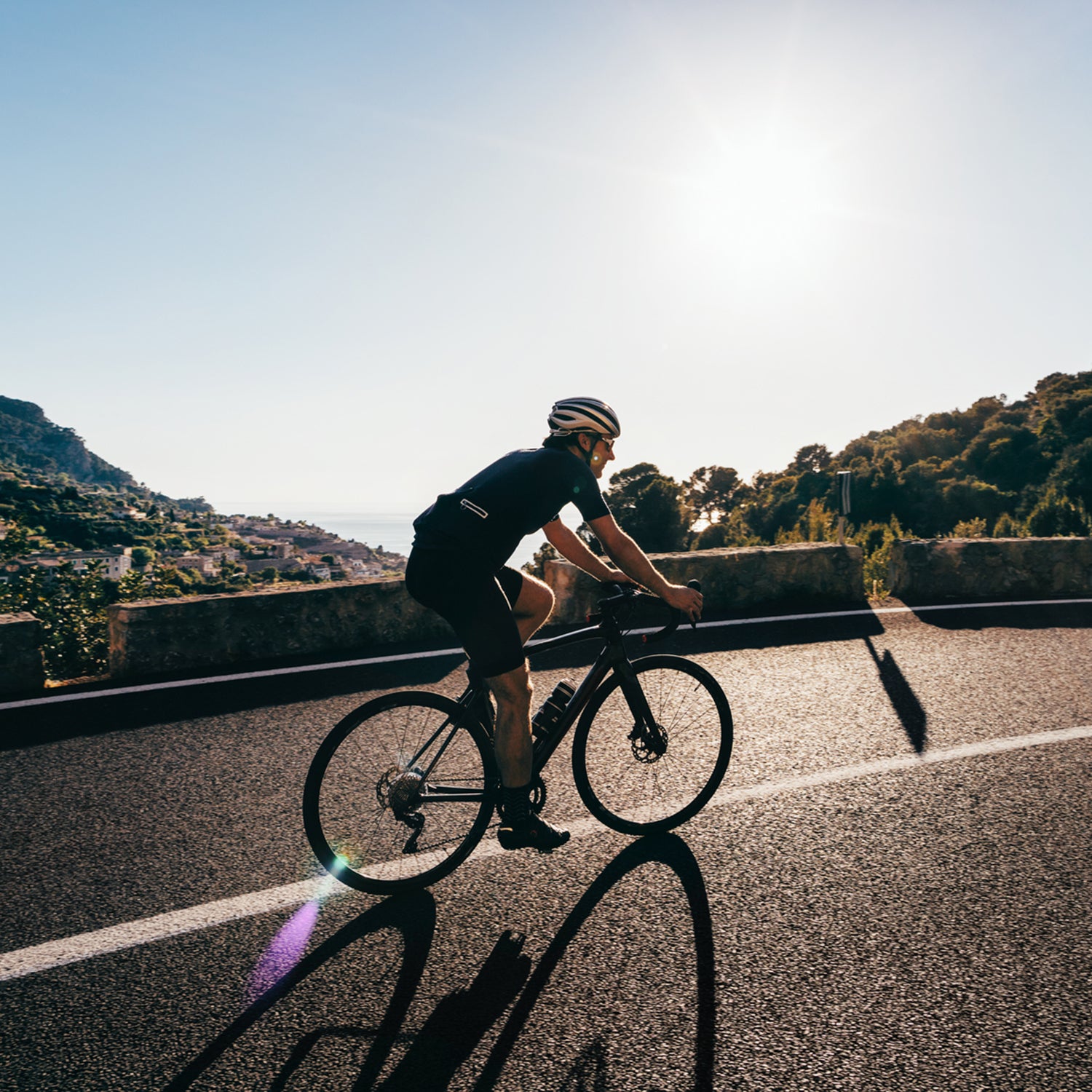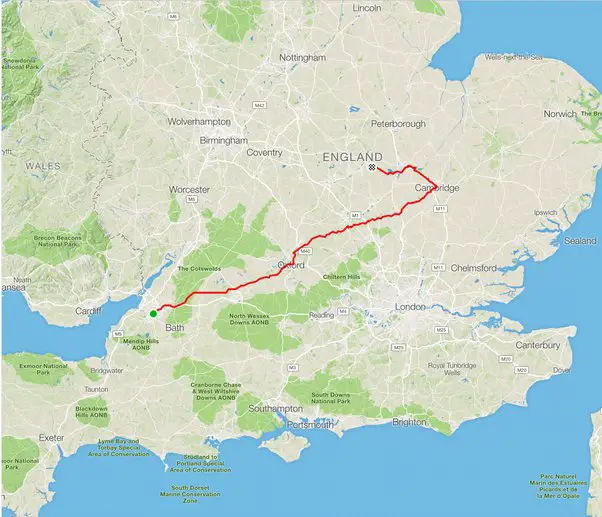Biking 20 miles takes about 1 to 2 hours, depending on speed, terrain, and fitness level. Average cyclists ride at 10-15 mph.
Cycling is a popular and efficient way to travel. Many people use bikes for commuting, exercise, and leisure. Understanding the time it takes to bike a certain distance can help in planning your journey. Factors like terrain, weather, and individual fitness levels significantly impact biking speed.
Beginners might take longer, while experienced cyclists can cover 20 miles faster. Proper preparation, including a well-maintained bike and adequate hydration, is crucial for a smooth ride.
Knowing your average speed and route conditions helps in estimating travel time accurately.
Factors Influencing Biking Speed
Biking on flat roads is usually faster. Hills slow you down as you climb. Downhill biking can be quick but requires caution. Gravel or dirt paths can be challenging.
Paved roads offer the smoothest ride. Each terrain type affects your speed.
Strong winds can make biking hard. Rain can make roads slippery and dangerous. Sunny weather is ideal for biking. Cold temperatures may slow you down. Warm weather helps you ride faster. Always check the weather before biking.

Credit: www.outsideonline.com
Average Time For Different Skill Levels
Cyclists’ time to bike 20 miles varies by skill level. Beginners may take 2 hours, while experienced cyclists might finish in an hour.
Beginner Cyclists
Beginner cyclists might take longer. They may need around 2 to 2.5 hours. Speed is usually 10 mph. These cyclists are still learning. Frequent breaks are common.
Intermediate Riders
Intermediate riders are faster. They can cover 20 miles in 1.5 to 2 hours. Average speed is around 12-15 mph. These riders have better stamina. They take fewer breaks.
Advanced Cyclists
Advanced cyclists are the fastest. They can bike 20 miles in 1 to 1.5 hours. Speed can be 15-20 mph. They have excellent endurance. Breaks are rarely needed.
Impact Of Bike Type
Road bikes are built for speed. They have thin tires and light frames. This makes them faster on smooth surfaces. A road bike can complete 20 miles in about an hour.
Mountain bikes are different. They have thicker tires and heavier frames. These bikes are slower on paved roads. It may take 2 hours to bike 20 miles on a mountain bike.
Hybrid bikes combine features of road and mountain bikes. They have medium-width tires and moderate weight. This makes them versatile. On average, a hybrid bike can travel 20 miles in 1.5 hours. They are good for mixed terrains. They offer a balance between speed and comfort.

Credit: www.outsideonline.com
Preparation And Training Tips
Biking 20 miles typically takes between 1 to 2 hours depending on fitness level and terrain. Consistent training and proper preparation can significantly improve your time.
Physical Conditioning
Start with short rides. Increase distance slowly. Your legs need time to get stronger. Stretch before and after biking. Drink water to stay hydrated. Eat healthy foods for energy.
Rest well to recover faster. Use the right bike for comfort. Check tire pressure regularly. Wear proper gear for safety.
Mental Preparation
Set small goals first. Think positive thoughts. Stay calm and focused. Listen to music if allowed. Visualize reaching your goal. Break the ride into parts.
Enjoy the journey. Ride with friends for support. Celebrate your progress. Keep a journal of your rides. Learn from each experience.
Nutrition And Hydration
Eat a balanced meal two hours before biking. Include carbohydrates, proteins, and healthy fats. Good options are oatmeal, bananas, and yogurt. Drink plenty of water to stay hydrated. Avoid heavy or greasy foods. They can make you feel sluggish. Small snacks like an energy bar can also help.
Keep a water bottle close. Drink small sips every 15 minutes. Hydration is key to maintaining energy levels. Bring snacks like energy gels or fruit.
They provide quick energy. Avoid sugary drinks. They can cause a crash later. Electrolyte drinks can help replace lost salts. Keep your energy steady.
Safety Measures
Ensure proper bike maintenance and wear a helmet for safety. Use reflective gear and lights for visibility. Choose less busy routes to minimize risks.
Helmet And Gear
Always wear a helmet when biking. Helmets protect your head from injuries. Choose a helmet that fits well. It should be snug but not tight. Make sure to wear bright and reflective clothing. This makes you visible to others.
Gloves protect your hands and improve grip. Padded shorts can make long rides more comfortable. Proper shoes are also important. They should have good grip and be sturdy.
Road Safety
Follow traffic rules at all times. Always ride on the right side of the road. Use bike lanes if available. Signal when you turn or stop. Look for cars at intersections. Be aware of your surroundings.
Avoid using headphones while biking. They can distract you. Use a bell or horn to alert others. Check your bike before each ride. Make sure tires are inflated and brakes work.
Technical Aspects
Regular bike maintenance is key. A well-maintained bike rides smoother and faster. Clean your bike to remove dirt and grime. This helps prevent wear and tear.
Lubricate the chain to keep it running smoothly. Check the brakes to ensure they work properly. Tighten any loose bolts or screws. Regular maintenance ensures safety and efficiency.
Proper tire pressure is crucial. Check your tire pressure before every ride. Use a pressure gauge to get accurate readings. Low tire pressure makes biking harder.
High tire pressure can cause blowouts. Follow the recommended pressure on the tire’s sidewall. Proper tire pressure ensures a smooth and safe ride.
Tracking Your Progress
Many apps can help you track your biking progress. Strava and MapMyRide are popular choices. These apps show your speed, distance, and time. You can also see your route on a map. Using these apps can make biking more fun.
Keeping a log helps you see your improvement over time. Write down your distance, time, and how you felt. This can help you set goals and stay motivated.
A simple notebook or a digital log works well. Look back at your progress to stay inspired.
Credit: www.quora.com
Frequently Asked Questions
Is 20 Miles A Lot To Bike?
Biking 20 miles can be challenging for beginners. Regular cyclists may find it manageable. Fitness level matters.
How Many Miles Is 30 Minutes Biking?
Biking for 30 minutes usually covers 5 to 10 miles. The exact distance depends on your speed and terrain.
How Many Miles Is A 20 Minute Bike Ride?
A 20-minute bike ride typically covers 4 to 6 miles. The exact distance depends on speed and terrain.
Can You Bike 10 Miles In 30 Minutes?
Biking 10 miles in 30 minutes is challenging but possible. It requires maintaining an average speed of 20 mph.
How Long Does It Take To Bike 20 Miles?
The average time to bike 20 miles is 1. 5 to 2 hours.
Conclusion
Biking 20 miles varies by fitness, terrain, and bike type. Regular practice improves speed and endurance. Always prioritize safety with proper gear.
Enjoy the ride and track progress for motivation. Happy biking!

Sanjeev Rattan, a 50-year-old cyclist from Delhi, started cycling in 2016 to reduce carbon footprint and promote sustainable transportation. He has completed multiple long-distance rides, including G2G, B2B, and Golden Triangle rides, and has earned 7 Super Randonneur titles from Audax Club Parisien.
In his professional life, Sanjeev works in data security and digital solutions for various sectors, including defense, law enforcement, smart cities, utilities, telecom, and IoT networks.


Leave a Reply